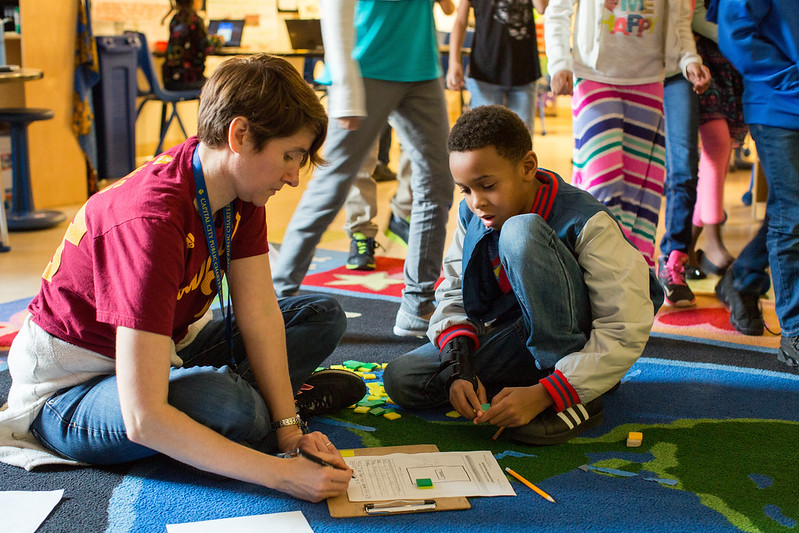The US government has directed millions of dollars to K–12 education with the specific goal of getting students back on grade level after the instructional time lost during the pandemic. High-impact tutoring would be an effective use of that money.

In April 2021, for example, a coalition of The Education Trust, Education Reform Now, FutureEd, the Center for American Progress, the Center for Research and Reform in Education at Johns Hopkins University, and the board of directors at the Success for All Foundation together urged the US Education Department to support states and districts in implementing effective, evidence-based interventions that would accelerate learning.
Specifically, they advised that states set rigorous standards for high-impact tutoring programs that are research- and evidence-based and target students most affected by the pandemic to accelerate student learning toward academic growth.
Top questions about high-impact tutoring
If your district has yet to implement a high-impact tutoring initiative, here’s everything you need to know to get started:
Q: What is high-impact tutoring?
A: The Annenberg Institute for School Reform at Brown University defines tutoring as a form of teaching — either one-to-one or in a small group: “High-impact tutoring leads to substantial learning gains for students by supplementing (but not replacing) students’ classroom experiences. High-impact tutoring responds to individual needs and complements students’ existing curriculum.”
Q: What are the components of a high-impact tutoring initiative?
A: They vary but often include specified weekly time commitment, a strong relationship between student and tutor, alignment with the curriculum, progress monitoring of student’s knowledge and skills, and oversight/coaching of tutors to maintain efficacy. For tutoring approaches to be effective, students must spend substantial time working with their tutor.
Q: Is the focus on remediation?
A: High-dosage tutoring, another name for this type of tutoring, is not remedial work. It focuses on scaffolding content so students can access new learning that is built on their knowledge and skills base. High-impact tutoring is beneficial for all students and should be treated as a support rather than standalone as a remediation tool.
Q: How do I know if my tutoring program is or isn’t high-impact?
A: Some of the red flags to watch out for include (but aren’t limited to):
- The tutoring occurs weekly or less than 30 minutes per session, is offered as optional or has higher than a 3:1 student-tutor ratio.
- It’s provided by an unqualified tutor, like a peer, a high-school volunteer or an untrained tutor.
- The learning is decontextualized, whereby students sit in front of a computer, focused only on discrete skills or filling out worksheets.
- It’s a substitute for other intensive interventions in place of classroom instruction or causes students to miss content-area classes.
Q: Does high-impact tutoring work?
A: Yes. In fact, experts say frequent tutoring is one of the best ways to support students’ academic progress. It has shown better gains than several other interventions.
Q: Where’s the proof that high-impact tutoring is effective?
A: Researchers Carly Robinson and Susanna Loeb conducted a meta-analysis of the existing research into high-impact tutoring. They found that research has consistently demonstrated the positive effects that tutoring interventions have on student learning. In an earlier meta-analysis, researchers examined interventions for low-socioeconomic students in elementary and middle school. Tutoring was singled out as the most common and the most effective intervention for these students, with an average effect size of 0.36-standard deviations on standardized academic tests with a 95% confidence interval.
Back to grade-level work quickly
With many students suffering under the burden of unfinished learning as a result of remote learning, those at the greatest risk are the same ones who were marginalized in the past. This includes low-income, minority and special education students as well as English learners. High-impact tutoring has shown the greatest outcome on these students. However, it is essential to note that students who have unfinished learning come from across the spectrum as a result of the pandemic.
By selecting a tutoring program that has been proven effective, is based on rigorous research, aligns with the curriculum and incorporates best practices for effective 1:1 tutoring, districts can help students make up for lost ground and get back to grade-level work as quickly as possible.
Brooke Humphrey is the executive director of curriculum at Fulton County Schools in Atlanta, Ga. The district uses FEV Tutor as its online tutoring program.
________________________________
Like this article? Sign up for our EdTech news briefing to get news like this in your inbox, or check out all of SmartBrief’s education newsletters, covering career and technical education, educational leadership, math education and more.
More from SmartBrief Education:
- 5 ways new school-home communication meets family, staff needs
- 5 virtual-classroom tools to foster authentic connections
- Changing the classroom experience with instructional audio
- Powerful social media solutions for students
- How comics curriculum boosts SEL
- 8 ways to make vocabulary instruction more effective
